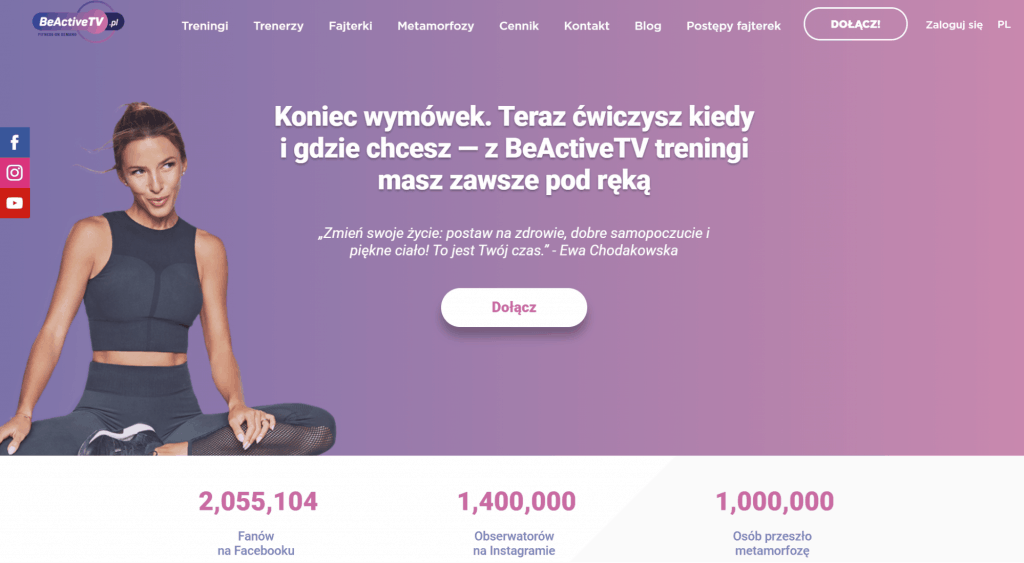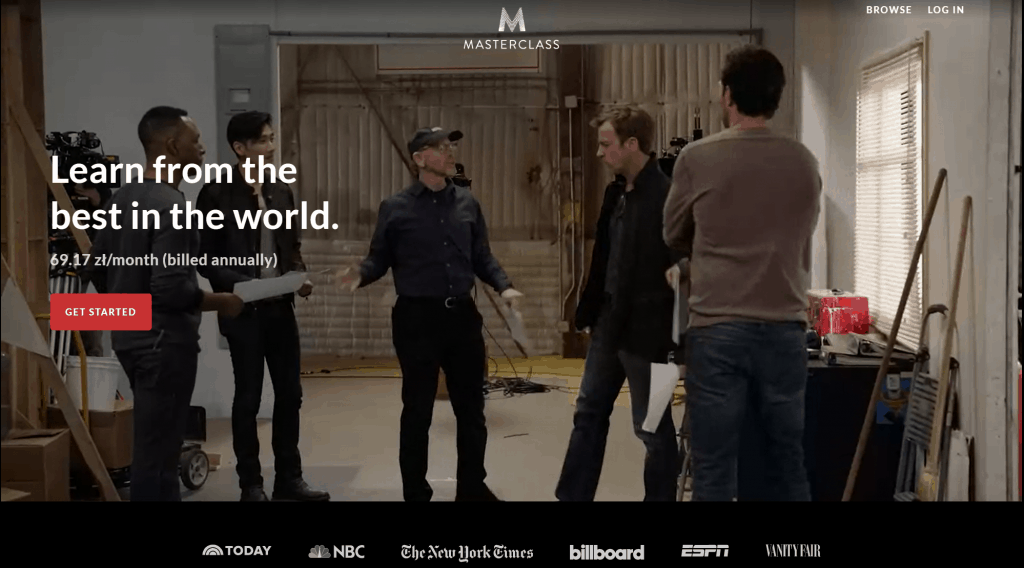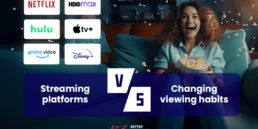While entertainment clearly accelerated the growth of VoD, as new use cases spring up like mushrooms. But at the same time, the medium is slowly morphing into a bona fide business opportunity – not only for the entertainment likes of Amazon, Netflix or Hulu but for any business looking for a way to capitalize on their valuable content, grow their audience and have a healthy passive income.
SVOD is the most common type of VOD offered by media companies at the moment. According to Business Insider, 55% of Americans use Netflix, where 1 billion hours of video is streamed per week, and 31% use Amazon’s Prime Video service.
And these services are expected to grow in popularity in the future as it is estimated that 568.4m people will be regularly watching VoD content by 2022. To capitalize on the trend, modern businesses and creatives should quickly seize the first-mover’s advantage.
What is VoD and why it’s gaining popularity?
VoD stands for “video on demand,” but the definition is not only quite vague – it misses the point, as the acronym covers a broad range of monetization opportunities.
Popular VoD monetization models
-
TVOD is the traditional transactional monetization model, whereby viewers pay per each watched or downloaded video file. In this transactional model, each person interested in the content buys a digital copy and “owns” it forever. Today, many digital content stores like iTunes, Amazon and Google Play offer TVOD distribution model, among other models available on their web stores.
- SVOD is a popular relational content monetization model for videos. A subscription agreement is made between the user and the website and, usually in monthly intervals, a subscription fee is charged from the user wanting to access video content. Originally this was the go-to model for services like Spotify, Netflix and HBO Go which have popularized it, SVOD is currently being transplanted into many other scenarios as the most effective money-making strategy. And it’s slowly squeezing TVOD out of the market.
As a variation of SVOD, some platforms offer free trials (e.g. 2-4 weeks free of charge) allowing users to look around and make sure the service is actually worth the money.
-
AVOD is ad-supported and typically offered free of charge to the viewers. Its main appeal is minute, but steady passive income – the main allure for YouTube creators.
Video tutorials will shape the future of VoD
Video tutorials and VoD are a match made in heaven, whether it’s for programming skills, self-help or fitness. It is also a way to build a very lucrative video empire by leveraging your unique talents.
VoD lends especially well for all kinds of fitness and professional instructional videos. For example, Polish superstar fitness instructor Ewa Chodakowska has made a fortune by selling fitness DVDs, books, and she has recently also acknowledged the importance of having an own SVOD platform BeActiveTV.pl is accompanied by a mobile app, blog and a big community.

But VoD works equally well for other cases:
-
Professional courses (Java, Photoshop, Premiere) – Udemy, Khan Academy, Coursera, Skillshare, Udacity, Lynda are either already offering or considering launching their proprietary VOD training platforms.
- University courses – both private and state-owned universities increasingly offer their courses via dedicated VOD platforms, enabling students to watch courses from the comfort of their homes.
- Self help, meditation, yoga classes
-
Musical instrument courses
Carleton University enables its students to watch CUOL lectures online by subscribing to VOD or by renting a single lecture with their so-called Pay Per Lecture service.
One of our clients approached Better Software Group to build a platform that would make it possible for personal trainers to host their own subscription-based instructional video courses. The partnership led to a project called fitVOD.online and while the platform is still under development at the time of writing, we are seeing a growing interest in VOD platform development.
Why not YouTube?
SVOD is the go-to place when the content is so good you don’t want to share it for free on YouTube. Take Masterclass as an example: it hires top talent and has top production value. Who would give it away for free? Or, rather, who wouldn’t pay if you get Steve Martin to teach comedy, Natalie Portman to teach acting and Serena Williams to teach tennis?
MasterClass yearly all-access plan costs $180, which is a steal for the value. If you suffer from short-lived enthusiasm, you might consider the $15 monthly subscription instead. Single classes sell for $90 each.
Udemy is a platform that does equally well. It hosts over 100,000 courses and teaches 24 million students, but is based on the transactional monetization model TVOD.

Summary
VoD is clearly going big and is no longer the preserve of entertainment. But capitalizing on VoD requires more careful content creation and curation combined with superior user experience. Because you are charging actual dollars for the content, it has to be amazing value for money.
Of course, YouTube is completely free for the users (minus the annoying ads) and might suffice for most cases. But the takeaway is simple: when competing with something free, you need to go to great lengths to justify the asking price.
If you find this article valuable, you can share it on social media →
Read more about the VOD & OTT Industry!
April 25, 2024
What is Connected TV and why is it becoming so popular?
Discover the benefits of Connected TV as it transforms entertainment by delivering internet-powered content through smart TVs and streaming devices.
March 7, 2024
7 reasons why is sports streaming becoming so popular
Learn more about the reasons why sports streaming is becoming more and more popular right now.
February 29, 2024
Why should streaming platforms adapt to changing viewing habits?
Discover the strategies through which streaming platforms adjust to changing viewing habits.
Are you looking for a partner to build a Video Solution?
Leave your email and a short description about your project. We would gladly discuss different cooperation possibilities!





